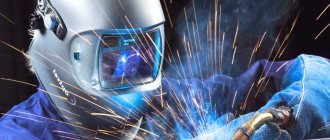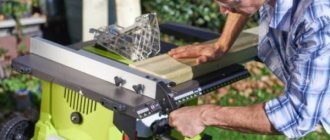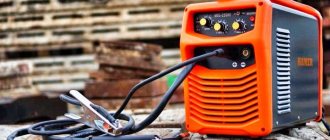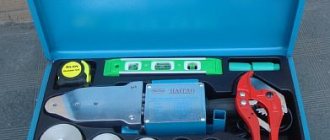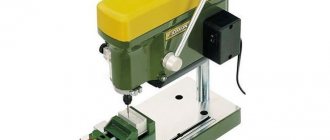A welding carriage (or welding tractor) is a special type of self-propelled equipment that is used for continuous and precise movement of a welding torch (or several) along the required path during the process of applying a welding seam. The small size of this mechanism allows it to be used in the most difficult to reach positions. This type of mechanized device is capable of welding seams of increased length, while eliminating the factor of human error and maintaining a high degree of quality of the work performed.
Basic design information
Electric arc welding is performed using a welding carriage. Like any machine, it works according to a specific program and has special wheels with which it moves. The main feature of this device can be called its self-propelledness - movement is carried out on rails (laid along the axis of the seam) independently, or the movement vector is determined by a person. The carriages are quite compact, and they are very easy to transport between adjacent rooms due to the fact that the rails for movement are light in weight, and they can be carried along with the device. The main working element is the welding head, through which liquefied gas is supplied. Consumable wire and protective flux also play a huge role. In general, the design of the device is like a trolley with a control panel, on which the tractor and additional mechanisms are located. Most parts can be either built into the mechanism or taken outside its structure. The devices described themselves are most often used in industrial enterprises and in mid-level workshops. They can be used either separately or as part of a large conveyor. The amount of possible functionality will directly affect the price of the carriage (for example, more expensive models have the ability to automatically control the correct geometry of the seam being applied or can independently regulate the amount of protective flux dispensed).
Existing classification
To date, several types of equipment in question have been developed, which can be grouped according to certain criteria. If we talk about the number of engines that are installed in the welding carriage/tractor, they can be divided into:
- Single-engine - all movement is carried out using a single engine (they have simpler technical characteristics, however, they are lightweight);
- Dual-motor - the movement of the carriage is controlled by two motors along different axes (such a device is more massive, but has a higher degree of reliability, and its parameters can be adjusted at a finer level).
Classification according to the methods of protection used can occur according to the following types:
- “Open arc welding” - with this method, no protection is used at all, therefore, the seam may be subject to various negative influences, however, the production process itself becomes cheaper;
- “With gas protection” - with this method, by creating a protective environment from active/inert gases, oxygen is not allowed to enter the seam and it is not subject to other negative influences;
- “Submerged” - this method uses additional flux, which improves the quality of the seam on the metal being welded and at the same time protects production from negative influences;
- “Use of non-consumable electrode” - filler material is simply not used in the welding process.
Classification according to the method of simultaneously supported welding arcs:
- Single-arc – leads one arc, is suitable for most traditional operations, is the simplest method and is used in single-motor carriages;
- Double-arc – capable of paralleling a pair of arcs, with welding occurring simultaneously, which significantly speeds up most complex operations, for example, in mass production;
- Three-arc – capable of introducing three arcs at once and is intended for professional welding work of high complexity (can only be used in dual-motor systems).
Welding tractor with PU for all positions
This type of tractor moves on steel/aluminum flexible rails, which are secured to the structure being processed with magnetic clamps. The flexibility of the rails allows you to follow the contours of the welded object, and the seam will be applied strictly according to a given pattern. This automation method is extremely productive when creating continuous and long seams. Also, one of the most important properties of this type of tractor is their innovative control function, thanks to which the carriage speed is maintained regardless of the load received (within 45 kilograms). This fact means that during operation the tractor can pull behind itself the welding wire feeders, as well as the cables required for the operation of the device.
In order to increase the flexibility of the automated process, several program templates have been developed. There are tractors that work according to a program for performing welding seams according to a chain of simple operations (“Instant start”, “Stop”, “Start the welding arc”, “Welding”, “Stop”, “Repeat”). As a result, the goal of using algorithm templates is to increase the speed and accuracy of welding, which significantly speeds up the production process compared to classic manual welding. Thus, CP (program control) is an ideal option for implementing large-scale projects where it is necessary to automate similar processes.
Device
The typical design of the unit is similar for all modifications and includes several main components:
- the undercarriage can be wheeled or rail-mounted (moves along guides); the type of seams formed depends on the type of movement;
- a replaceable spool of welding wire is necessary for uninterrupted supply of the additive to the work area;
- the wire feed mechanism comes with a different number of guide and pulling rollers;
- the guide system determines the mobility of the electrode; the welding head is a refractory electrode for igniting and maintaining the electric arc;
- The control panel is designed for rational settings, the unit is designed for connecting workpieces of various thicknesses.
Diagram of the device of the welding tractor ASU-21
Usually all controls are located in the body of the tractor trolley, sometimes the unit is taken out separately for ease of use of the device.
Detailed functional advantages of using welding tractors
The use of self-propelled welding tractors for semi-automatic welding in shielding gases plays a big role in the field of complete automation of complex production processes. They qualitatively change the conditions, speed and accuracy of work in comparison with conventional manual welding, and among their immediate advantages we can highlight:
- Use of standard equipment for welding - in the case of permanent use of welding tractors in industry, there is no longer a need to purchase any other options for special devices - most tractors are easily compatible with traditional semi-automatic welding machines and a large range of welding torches.
- There is no need for financial costs for additional training of operators - the operation of the welding carriage itself is intuitive, and it can be used by any welder familiar with the operation of semi-automatic machines. The only thing is that you still have to go through the initial briefing, but it can take a maximum of 2 days. In addition, carriage welding is allowed to be entrusted even to those specialists who have lower qualifications even in relation to the manual process. This is due to the fact that the main welding parameters (wire feed speed, voltage and current) are pre-set by more experienced specialists directly on the control panel, and the welding control speed (carriage speed) and the inclination of the welding torch in relation to the surface being processed are also outside control of the current operator and are determined in advance. Thus, the operator can only place the carriage in the proper position above the object being welded, select the required welding mode and press the “Start” button. After this, all that remains is to visually control the entire procedure.
- Improving overall quality - when welding using a tractor, the distance from the angle of inclination of the torch (both across and along the joints) to the cut of the welding torch nozzle, which sets the arc size, will be permanent and regulated by the welding torch installed in the holder. The speed will remain unchanged over the entire distance of the arc along the joint. The trajectory of the arc movement is also subject to control. All this contributes to controlled penetration, creation of a fine-scaled and uniform weld structure, preventing the formation of undercuts, improving the geometric quality of the applied weld, and creating a smooth flow of the weld bead to the base metal. When using an oscillating burner block, the weld quality of facing and filling beads in multi-pass welds is improved. Even if the weld joint is not assembled properly, good quality work can be achieved due to the fact that most carriages have stop rollers that can track the weld line while adjusting the path of the welding torch.
- Increasing the intensity of the welding process - it is natural that any automation of any process makes it possible to increase the intensity of labor. Regarding the topic of carriage welding, according to statistics, labor intensity will increase by 40-45% of the full working time, which equates to a saving of about three or three and a half hours per shift, compared to manual welding. In cases where expensive and multifunctional welding tractors are used, this figure can approach savings of five or six hours of working time per shift. As a simple example, the following situation can be cited: even an experienced welder with a certain amount of perseverance will rarely be able to make a seam longer than one meter without changing his position. In any case, he will have to either move along the seam being produced or change the position of the workpiece. Naturally, while carrying out these operations, the welder is forced to extinguish the arc. When resuming work and before the mandatory welding of the seam overlap by 15-25 millimeters, he must first clean the end of the seam from films and splashes. The welding tractor moves without interruption, simultaneously welding a seam along any length, so there is no need for him to change his position (like a welder), while interrupting operations. Thus, periodic interruptions of welding work do not occur. In addition, the absence of the need for periodic rest for the welder will also play a significant role, since there is no need to constantly control the progress of the welding speed and at the same time maintain proper electrode extension in order to obtain a better-quality seam. This shows that the operator can monitor not only his own small section of the arc, but he is also able to control the situation in general, including monitoring the actions of other operators who are processing the same object in order to timely coordinate their actions with them. The same can be said about monitoring the behavior of the structure itself during operation. A big advantage can be the use of a machine with two welding torches, which makes it possible to simultaneously make two seams in parallel or make two passes along the same seam when separating the edges. At the same time, one operator is able to service several carriages at once, which will further increase productivity several times.
- Reducing the percentage in the field of deformation welding - control of heat input allows you to reduce the overall percentage of deformation of the processed structure after completion of the work. This circumstance is a direct consequence of the fact that very precise welding parameters are maintained during processing - arc voltage and welding speed, which cannot be achieved in manual production. In addition, the constant extinguishing/igniting of the arc as the welder moves along the length of the seam, as well as the need to perform the procedure for closing the seam, all affect the risk of subsequent deformations. It is worth noting that applying sutures with two carriages at the same time will reduce the risk of possible negative consequences by half.
- Saving on welding consumables - this circumstance arises due to the implementation of finer settings of welding parameters and their maintenance throughout the entire work. The main factor here can be identified as a reduction in losses in the volume of welding wire during spattering. The absence of breaks during work, when moving along the joint of the welder, and, in fact, the resumption of work itself (the absence of the need to overlap seams significantly saves welding materials) is also reflected. The number of passes can be reduced due to the possibility of welding with transverse vibrations. In addition, with the uniformity and homogeneity of all operations, the consumption of protective gas is reduced, which will become a significant item in terms of savings when expensive gas mixtures based on argon are used for protection.
- Auxiliary processes will require lower costs - the costs of additional operations, such as cleaning the heat-affected zone and stripping the seam, as well as removing seam reinforcement, will be significantly reduced due to the fact that smooth and neat seams will be obtained already in the first pass. Reducing spatter levels will also impact the costs associated with seam stripping.
- Increasing the environmental level of production - environmentally friendly working conditions will be achieved due to the fact that the welder will be at the operator’s place, and not sit in close proximity to the smoke and heat that are generated during arc welding.
As a result, with the use of tractor welding, you can automate any enterprise, even a small one, and bring it to the “plus”. This is especially true for those companies where the staff of specialists has sufficient experience in working with semi-automatic welding in shielding gases - then the result will be achieved in the shortest possible time and will be more pronounced. In addition, the introduction of carriages/tractors will not require extremely large investments and will pay for itself quite quickly (unless a very large-scale and complex project is planned) and there is time for installation:
- Some carriage models cost even less than their submerged tractor counterparts;
- Despite the fact that the purchase volumes of consumables (shielding gases and consumable wire) will remain at the same level, however, their costs will decrease significantly;
- There is no need to purchase additional equipment for calcining flux, or to re-equip a special room for this;
- There is no need for a radical change in the technology of the processes being performed (for example, there is no need to introduce new types of edge cutting);
- There is no need to train personnel in new welding methods; accordingly, there will be no need for additional certification and certification of workers.
Advantages
This equipment has many different advantages. Now it is very economical, since other devices are much more expensive, but at the same time it is quite functional.
Most often, it combines the ability to work with both gas and flux, but there are models that can only use one technique.
It is also very easy to use and assemble. It consists of simple parts, so if something happens it can be repaired even in an emergency.
Therefore, it will not have any problems with maintenance, which you can do yourself. From all this we can highlight that such a tool is also reliable.
The simplicity of the tractor is manifested not only in this composition, but also in the fact that it is easy to learn how to use it. It has just a few buttons that have intuitive functions.
You can also adjust the speed of movement, which saves consumables.
Although the tractor is simple, with its help it is possible to make a beautiful and high-quality seam.
Another advantage of this tool is its portability. It is compact so there are no problems with transportation that can be with other devices, since they are large and often heavy.
The tractor has a feature that makes it many times more efficient than other devices - it can work with thick metal.
And at the same time, regardless of the type of seam, the quality will always be of high quality (if you set the correct parameters), since the human factor is eliminated.
And the last thing is the ability to produce welding of excellent quality without preparing the metal and edges for it. This ensures time savings and high productivity.
Existing disadvantages
Unfortunately, with all the significant positive aspects, the devices in question also have significant disadvantages:
- Before starting work, you will need to make all the settings very accurately;
- Precision equipment is prone to complex breakdowns, so quick repairs and resumption of work are extremely doubtful;
- There are specific restrictions on the maximum/minimum diameter of looped seams;
- The equipment itself most often has a small mass, but accidental excessive load on it can quickly damage it;
- Operation requires certain skills, which makes this technology poorly accessible to small businesses;
- High price.
How to use a hand winch?
In general, everything is very simple. You just need to follow safety precautions and use common sense. In addition to the lever winch, you must purchase a cable, preferably no thinner than on a winch and at least 10 meters long, and fasteners.
Attaching the cable to the tricycle
We securely attach the cable to the stuck equipment, unwind it to its full length, and hook it to the winch. We hook the winch itself to a tree, a pole, a special anchor for a winch, etc. When pulling out light equipment that is not too “stuck”, you can even use a shovel instead of an anchor (pictured). One person holds the shovel at an angle, the second operates the winch.
The short cable of the lever winch is a big inconvenience. In my case, its length is just over half a meter. If you use an anchor or a shovel, moving them further with each pull, you can pull out the equipment quite quickly.
But if you “swan” behind a tree or pole, you will have to come up with a solution. You can, for example, use a chain instead of a cable, each time simply moving the winch hook, or a cable with inserted rings along the entire length (analogous to a chain). You can also use some kind of clamps or make a loop from a cable. In general, there are many options.
It took about 5 pulls with a lever winch to pull the tricycle out
If safety precautions are not followed, operating a hand winch can be dangerous. A serious danger is posed by the cable, which, if broken, can cause injury to a person. Therefore, when the load is heavy, it would not be a bad idea to throw some kind of jacket or large rag over the middle of the cable, which will not allow it to accelerate too much if it breaks.
It is important to securely fasten the cable to the equipment
Problems of wise choice
Each welding task requires its own special parameters, which require careful verification when purchasing a carriage/tractor. For small-scale tasks that do not involve particular complexity and require only constant execution of the same type of operations, single-motor machines without program control are quite suitable. They are easy to operate and do not pose any particular difficulty when repair situations arise. If a large-scale project is required, and even more so in a short time, it is better to purchase multi-arc and multi-motor samples. The same will apply to the implementation of mass production.
IMPORTANT! When purchasing, the main selection criterion should be the maximum and minimum current, as well as the size of the consumable wires used!
Instead of an epilogue
Welding tractors/carriages are a simple but functional solution for performing arc welding work in automatic mode. They are able to move along a pre-selected path or on special rails, which leaves the person only with the responsibility of visually monitoring the work being done. The main task of the operator is to correctly and properly set the necessary settings in accordance with the task being performed. The device can do all the work independently. The type of work can be completely different, so the devices themselves can be light and inexpensive or bulky and expensive. Still, it is more correct to say that a welding tractor or carriage is primarily aimed at industrial production volumes.
Advantages
The use of this device provides the process with the following advantages:
- Accurate support of specified parameters throughout the entire procedure;
- Modern models have a digital display;
- Regardless of the condition of the filler wire tip, the submerged arc welding tractor ensures reliable arc ignition;
- There is no need for preparatory work with the electrode wire;
- The welding process cycle is easily programmed according to the required parameters;
- Provides a soft start to the process;
- It is possible to perform high-quality, effective welding even in difficult places;
- It makes it easy to weld thin metal.
